The Acoutect team is composed of the following ESRs (click on the pictures to get detailed information)
|
|
ESR 01 – Huiqing Wang – Eindhoven University of Technology BIO: I come from a beautiful coastal city, Yantai, China. I spent my first 19 years there until I left my hometown for college studies in 2008. I received my bachelor of engineering degree in Aircraft Design and Engineering from the Nanjing University of Aeronautics and Astronautics in 2012. After one gap year, my interest in aerodynamics and numerical simulation motivates me to attend the master program of aerodynamics at Delft University of Technology in the Netherlands. I am very happy with my choice to come to Europe for my postgraduate study. I graduated from Delft in October 2013 and my master thesis project was related with developing robust and efficient uncertainty quantification methods for CFD applications. I worked as a researcher in the department of aerospace and mechanical engineering at the University of Liège, Belgium, until the summer of 2016. Then, I moved to Hong Kong for another year of postgraduate study and research. I came back to the Netherlands and join the ACOUTECT project at TU/e in November 2017. RESEARCH PROJECT: This PhD project aims to be a step towards a better understanding and prediction of the sound propagation in open plan spaces by implementing, further developing and validating room acoustics modelling techniques. Since state-of-art room acoustic modelling approaches, mostly based on geometrical acoustics, could lead to incorrect predictions in open plan spaces, this research aims to contribute with other acoustic modelling approaches for large open (interconnected) spaces, including non-line-of-sight source-receiver paths. Specifically, the researcher will implement and validate a three-dimensional wave-based acoustic method, a high-detailed but computationally expensive method, together with a simplified approach (image source/diffusion equation) for high frequencies. The wave-based approach, discontinuous Galerkin (DG) method, will be implemented in a high-level programming language allowing for further computational parallelization. Additionally, the researcher will validate the applicability of the methods for room acoustic purposes and, specifically, how appropriate they are for open plan spaces, by comparing them with real-life scenarios. E-mail: h.wang6@tue.nl |
|
|
ESR 02 – Julie Meyer – Aalto University BIO: Julie Meyer received a bachelor’s degree in physics (2013) and a master’s degree in acoustics (2015) from Pierre and Marie Curie University. She also worked for an acoustical consultancy firm specialized in the design of performance spaces before starting her PhD in the Virtual Acoustics team at Aalto University. Her fields of interest include room acoustics, spatial audio, perception, and psychoacoustics. RESEARCH PROJECT: For about fifty years, the ability of computational room acoustic modeling techniques developed and improved to reliably predict room acoustics objective parameters. There exists two types of methods. The most common are methods based on geometrical acoustics (GA) that offer efficient computational performance but have well known limitations. On the other hand, wave-based methods, that solve the actual wave equation numerically, provide better accuracy but at a much higher computational cost. While numerous studies focused on the physical accuracy of wave-based room acoustic simulations, perceptual evaluations of these acoustic models has previously been scarcely examined. This research project focuses on the perceptual validation of different wave-based simulation techniques with an emphasis on the finite-difference time-domain (FDTD) method. This method has been one of the main research topics in the Aalto Virtual Acoustics team for two decades. The investigation of the perceptual quality and realism of these simulations can provide new knowledge that can lead to more efficient acoustic models by focusing not only on their mathematical but also on their perceptual accuracy. E-mail: julie.meyer@aalto.fi |
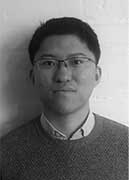 |
ESR 03 – Xiaoxue Shen – University of Liverpool BIO: Xiaoxue graduated with a Bachelor and Master degree in Transportation Engineering from Central South University in Changsha, China. During his masters he mainly focused on railway vibration and noises and his thesis was on the characteristics of acoustic-structure interaction of trains’ floor structure. The main prediction tool was OpenFOAM, an open source software based on FVM. He joined the Acoustics Research Unit in 2018 as an Early Stage Researcher (ESR) in the EU Marie Curie project, ACOUTECT, studying for a full-time PhD on modelling of structure-borne sound transmission in lightweight buildings. His PhD will focus on the development of prediction models that can inform engineering design on noise and vibration transmission in lightweight buildings, particularly from machinery and impacts from people. Xiaoxue is supervised by Prof. Carl Hopkins and Dr PJ Lee. RESEARCH PROJECT: Lightweight buildings can have walls or floors that are complex, imperfectly periodic structures that are exposed to high forces from impacts such as from footsteps. Compared with heavyweight buildings for which sound transmission can be predicted with validated models, the modelling of lightweight buildings is less developed. The aim of the project is to develop prediction models based on methods such as FEM, SEA, and FVM for structure-borne sound transmission in lightweight buildings that can inform engineering design, particularly due to sources such as machinery, heavy sources used for impact sound insulation tests (e.g. rubber ball) and people walking. E-mail: Xiaoxue.Shen@liverpool.ac.uk |
|
|
ESR 04 – Matthew Edwards – Matelys Research Lab BIO: Matt Edwards was born in Chicago, IL, and raised in Atlanta, GA, in the United States. He received his MSc degree (mechanical engineering) in 2015 from the Georgia Institute of Technology with a concentration in acoustics & dynamics, and thesis titled “Development of an Automotive Steering Wheel Mounted Audio User Interface”. While there he received the Leo Beranek student medal for excellence in the study of noise control from the Institute of Noise Control Engineering of the USA (INCE-USA) for his undergraduate research on the modeling and influence of aircraft noise on buildings. Upon graduation, Matt moved to Peoria, IL, USA, to work as an acoustic engineer at Caterpillar Inc. (2015 - 2017) While there, Matt developed acoustic solutions to machine noise issues on a wide range of Caterpillar products, gaining valuable experience in sound validation and testing. Matt is currently working as an early stage researcher (ESR) at Matelys Research Lab in Lyon, France, while pursuing a PhD in acoustics through the INSA – Lyon (Institut national des sciences appliquées de Lyon) as part of the Acoutect program. His research topic is on the prediction and control of rolling noise in buildings. RESEARCH PROJECT: New buildings in urban areas are divided into commercial and habitable areas. Commercial shops typically exist on the ground floors, with private residencies on the upper floors. This use has revealed critical disturbances due to the noise generated by rolling delivery carts when the buildings are mainly occupied (e.g. early in the morning). These carts generate vibrations at low frequencies (below 100 Hz) that propagate easily throughout the building structure and on the upper floors, disturbing the habitants therein. While work has been done to investigate footfall noise, little research has been done in the field of rolling noise in buildings. Additionally, current common experimental methods (e.g. use of a tapping machine) do not accurately represent the noise profile of such rolling noise. The aim of this project is to develop an original model for rolling noise in buildings, taking into account the roughness of the ground surface and the roughness profile of the wheels. The model will also consider the mechanical impedance of the ground, including possible treatment of floor noise, and will be validated by comparison with experimental data. Additionally, design guidelines will be defined for developing new vibration controls. E-mail: matthew.edwards@matelys.com |
 |
ESR 16 – Baltazar Briere de La Hosseraye – Eindhoven University of Technology BIO: Born and raised in Paris, I graduated in 2017 from a double-degree program as graduate engineer of the ECN (Ecole Centrale de Nantes) and MSc Engineering Acoustics in DTU (Denmark). During my studies I had the chance to do a 6-months internship as acoustic consultant assistant, and to follow courses on various fields in acoustics (measurement techniques, room acoustics and loudspeaker systems). My master thesis was on the evaluation of edge effect of absorptive materials at low frequency, by using a low frequency loudspeaker array. In 2018, I joined Maarten Hornikx’s building acoustics chair at TU/e to work on the Oculus project, focusing on material’s measurements and modelling. RESEARCH PROJECT: Numerical acoustic algorithm are becoming more and more performant with the increase of computational power. With hybrid modelling numerical schemes, it becomes realistically feasible to simulate acoustic phenomena with a sufficient accuracy over the whole audible frequency range (20-20000 Hz) in many configurations. |
 |
ESR 06 – Nadia Dallaji – Moelven Limtra BIO: I am originated from Tunisia where I have studied energy engineering at the National school of engineers of Monastir ENIM, which has provided a strong foundation, in materials resistance, fluid mechanics, renewable energy and Thermal building. Being major of my promotion, I have joined the French university ECL (Ecole Centrale de Lyon) in 2016 to study master of science in acoustics in the framework of a double degree cooperation through which I had the opportunity to study building acoustics courses at National school of public works of the state ENTPE (Ecole Nationale des Travaux Publics de l'Etat) as part of the cooperation. As a part of the master of acoustics, I had a 6 months internship in the French Alternative Energies and Atomic Energy Commission (CEA Cadarache) in France where I worked on the active acoustic detection of the presence of bubbles in a liquid flow as a type of instrumentation that must allow the detection of a gas leak in the sodium at the ASTRID sodium-gas heat exchanger witch is a 4th generation reactor. RESEARCH PROJECT: Timber beam constructions are very common in Scandinavian countries. The sound and vibrations properties do unfortunately not fulfill expectations many people have to normal human occupancies, especially for lightweight timber floor constructions. In the low frequency range these two items are closely coupled to each other. During this PhD program, The main focus will lie on the floor elements of the post and beam building system for multi-storey timber buildings named Trä8 and developed by the Scandinavian glulam factory Moelven Toreboda AB in 2009. The approach here is to study the upper part of a lightweight floor element, by considering it as a composite plate. Composite plates have been studied thoroughly when they have thin surface sheets of metal, but the surface leaves are considerably thicker in floor constructions. In that case much less is known. Parametric studies are made using statistical and deterministic models, as well as measurements, to describe the composite panel's vibroacoustic behaviour. Emphasis is placed on the frequency region 20 – 100 Hz, a region that has been shown to be of particular importance for the subjective impression of impact noise. Therefore a general aim with the work will be to extend the knowledge about parameters important in the low frequency range. E-mail: Nadia.Dallaji@moelven.se |
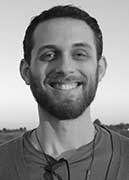 |
ESR 07 – Augusto Carvalho – KU Leuven BIO: Augusto is a Brazilian Civil Engineer (degree obtained in 2015) with a MSc in Acoustic and Vibrations (degree obtained in 2017) from the Federal University of Santa Catarina with a dissertation on the topic of acoustic metamaterials for sound absorption in low frequencies. During his degree in Brazil he was awarded three scholarships and fellowships: Science without Borders Scholarship in Acoustic Engineering at the University of Salford, UK (2013-2014), CAPES-FIPSE Scholarship on Civil Engineering at the University of New Mexico, USA (2012) and a PIBIC scholarship on Civil Engineering at the Federal University of Campina Grande (2011-2012). He founded an NGO in 2010 to work with children in hospitals and slums of Northeastern Brazil and is also a composer, with two albums released so far. His main interests of research are acoustic metamaterials, black holes and numerical methods in acoustics. RESEARCH PROJECT: The project "Development of acoustic resonant metamaterials for building applications (ESR7)" relies on the design of new geometries known as metamaterials based on the four L's: low frequency, low density, low mass and low manufacturing cost, applying acoustic theory and numerical methods to do so and aiming to achieve outstanding results for building applications. E-mail: augusto.carvalho@kuleuven.be |
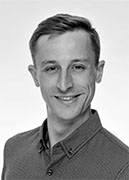 |
ESR 08 – Felix Egner – KU Leuven BIO: Originally from Germany, Felix studied Mechanical Engineering at Technical University Vienna, Austria. With a thesis in relation to acoustical source imaging he received a BSc degree in 2016 and proceeded with a MSc degree in 2018. In his master thesis Felix investigated in simulation and measurement of automotive air channel acoustic properties. Starting with September 2018 he joined KU Leuven as well as the ACOUTECT project in order to conduct research in the broader field of acoustic materials and numerical simulations. His research interests include noise control for the sake of human beings, the propagation of sound waves and audibility of acoustic simulation data. Privately, Felix enjoys playing the electric bass guitar and practicing various outdoor sports.. RESEARCH PROJECT: This research project will investigate identification approaches for material and structure meso- and macro-properties of building noise and vibration problems. Especially shortcomings of currently existing identification approaches which rely on large, expensive infrastructure and are very time-consuming will be tackled. With the introduction of novel material concepts such as for instance metamaterials and enhanced numerical models of vibro-acoustic systems the availability of accurate and reliable material data becomes more and more important. Therefore, lessons learned in the Mechanical and Aerospace industry where similar problems are encountered but different approaches are used will be applied.. E-mail: felix.egner@kuleuven.be |
 |
ESR 09 – Antonio Sorrentino – Level Acoustics & Vibration BIO: Antonio Sorrentino received his MSc degree (Aerospace Engineer) in 2016 from the University of Naples Federico II. His studies and research activities at University have been addressed to improve the comfort into the aircraft cabin reducing the amount of heard noise looking at development of new porous materials. He started his thesis in November 2015, “Manufacturing and Acoustical characterization of electrospun blankets in Polyvinylpyrrolidone”, the aim of the project was to recognize the key parameters of the elettrospinning manufacturing technique and to characterize the acoustical behaviour of the products, focusing on the influence of different chemical configurations on the Sound Absorption Coefficient and the Flow Resistivity. This work has been selected to represent the University of Naples Federico II at the Pegasus-AIAA European Student Conference held at Technische Universität of Berlin in April 2017, it was published for the American Institute of Aeronautics and Astronautics. In 2017 Antonio received a scholarship at CeSMA - Federico II (Naples), working for the Department of Industrial Engineering as R&D engineer. During this period he continued working on the characterization of soundproofing materials, developing a model to correlate the Sound Absorption Coefficient and Flow Resistivity and designing prototypes for the acoustical testing of materials. He took part to the planning tasks of two industrial research projects in partnership with University and Aeronautic Companies, in the last months of his work at University of Napoli his research interested light aircraft mufflers. Starting from the November 2017 he is working at Level Acoustic and Vibration in Eindhoven as Early Stage Researcher in the Acoutect project. RESEARCH PROJECT: This research, as part of the Acoutect project, is addressed to support the design and the development of modern lightweight buildings. The decrease in weight of structures is well-appreciated by the building industry but the lightness makes the prediction of the response of building elements due to structure borne excitation by installations more complicate. The increase of the equipment in dwellings and the reduction of the weight drive to a further understanding of the interaction between building elements and installations. The research will focus on the development of solutions based on creating dis‐interaction of equipment and lightweight building elements. To that aim, understanding of the physics of the equipment, of the building elements and their interaction needs to be built up through tools and smart solutions. The work will entail theoretical analyses, modelling and measurements. E-mail: antonio@levelav.nl |
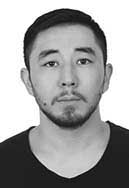 |
ESR 10 – Timur Mukhametkaliyev – Materialise NV BIO: Timur Mukhametkaliyev received his Bachelor degree in Material science and technology in 2012 from Karaganda State Technical University. In 2014, Timur graduated from Tomsk Polytechnic University with a Master degree in Material science and technology. On the basis of the obtained experimental data about properties of nanostructure coatings, Timur was awarded a Master degree with honours. His research interests are related with interdisciplinary materials development, characterization of nanostructures by using various research methods such as X-ray diffraction, scanning electron microscopy and etc. During his research career, he has contributed to international conferences and papers in recognised journals like Materials Letters, Thin Solid Films, Materials Science and Engineering C, Corrosion Science, Applied Surface Science, Journal of the Mechanical Behavior of Biomedical Materials. In 2017 he was selected for research position “ESR 10 - Engineering of advanced acoustic meta-materials made with Additive Manufacturing” at the Materialise NV. The goal of this research is to optimise printed structures for acoustic metamaterials and to investigate how to scale meta-materials in volume and size for its usability in buildings. RESEARCH PROJECT: Acoustic meta-materials have a high potential for instance as acoustic damper for noise in a certain frequency band. A pilot-study performed at KU Leuven provided a proof-of concept for meta-materials manufactured with Additive Manufacturing (work of C. Claeys et al). The goal of this research is to optimise printed structures for acoustic metamaterials and to investigate how to scale meta-materials in volume and size for its usability in buildings. Furthermore, the research findings will be implemented in a demonstrator. Topics connected to this work include defining possible structures for meta-materials, investigation of the manufacturability of structures for production with Additive Manufacturing, selection of appropriate acoustic structures taking into account combination of acoustic properties and the manufacturability, investigation of different AM technologies and materials. In performing the research there will be a close collaboration with ESR7 from KU Leuven. E-mail: m.timur@materialise.be |
 |
ESR 11 – Carmen Rosas – Chalmers University of Technology BIO: I was born in Seville, Spain, and raised in a small town called Coria del Río. I started studying Architecture, and, although I really liked what I learned, I realised I wanted to know more about the sounds around us, so in 2003 I moved to Málaga to make a degree in Telecommunication Engineering with a specialisation in Sound and Image. After working in different industries for several years, in 2015 I decided to come back to sound and doing the Master in Acoustic Engineering also at the University of Malaga, and I couldn't be happier with that decision. It gave me the opportunity to participate in many educational activities, as well as presenting my Master's project about binaural recordings and soundscapes in professional conferences, where I learned about the research world and its possibilities. I'm interested in many different areas of science, humanities and art, so I always seek an interdisciplinary approach to everything I do. Sustainability and improving people's lives are also important factors to me, and I could briefly work in environmental consultancy, where I learned a bit more about the application of regulations and measurements. Now, as part of the ACOUTECT project at Chalmers University of Technology, I have the opportunity to explore human response to sounds and building, and trying to make a PhD of it! I also consider scientific communication highly important to society, so I like organising workshops and exhibitions in both scientific and cultural contexts. And, as many acousticians, I love music and having a lot of instruments mostly as decoration at home. RESEARCH PROJECT: Today, regulations in building acoustics are often formulated as single A-weighted values. Such formulations do not take into account time structure of the signals from different sound sources such as for instance traffic or ventilation systems. They do neither capture the impact of low frequency sound correctly. This is a severe drawback having in mind that most of the noise control measures (e.g. façade isolation) are insufficient at low frequencies due to the given laws of physics. Research is needed to understand the importance of low frequency in terms of human response to sound and vibrations. For this the simulation of realistic time signals in dwellings due to environmental sources is needed as well as a manageable approach to measure the perceptual response to such time signals. The goal of this Acoutect project is to assess the role that low frequency sound and vibrations should have in future building acoustics regulations and noise control measures, by the analysis and simulation of the main sources in built environments and the measurement and evaluation of the perceptual response to those signals. E-mail: carmen.rosas@chalmers.se |
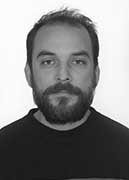 |
ESR 12 – Georgios Diapoulis – Chalmers University of Technology BIO: Georgios Diapoulis is a doctoral student at the Divison of Applied Acoustics, in the research group Vibroacoustics, department of Architecture and Civil Engineering at Chalmers University of Technology, Göteborg, Sweden. He did his bachelor studies in Materials, science and technology at the University of Crete, Heraklion, Greece. Then he did two years master studies in Music, mind and technology at the University of Jyväskylä, Jyväskylä, Finland. His research interests are related to auditory and visual perception, building acoustics, computerized sound and realtime sound-synthesis, human bodily movement, information retrieval and social cognition. RESEARCH PROJECT: This research project focuses on perceptual measures (eg. annoyance) which affect cognitive performance of employees in open office spaces. The main purpose is to identify the acoustical characteristics of walking sound using both air-borne and structure-borne recordings on different floors. Innovative measurement techniques developed at the division will be utilized together with modeling techniques for the contact forces during walking. The aim is to obtain data that can be used for auralisation and listening tests of walking sound in office spaces. Possible applications may include noise control solutions and innovative applications for smart buildings. The outcome of this research project aims to promote the well-being of employees. E-mail: georgios.diapoulis@chalmers.se |
 |
ESR 13 – Raimundo González – Aalto University BIO: Originally from Chile, I have a MMus in Music Composition from the University of Alberta, (Canada) and a MSc in Acoustic & Music Technology from the University of Edinburgh (UK). Most importantly, I am passionate about the phenomena of sound, both for its aesthetic potential as well as its physical behavior and impact. This passion is what inspired me to join the Acoutect consortium and to pursue a PhD at Aalto University. I am currently a member of the Virtual Acoustics group, a large team of researchers led by Dr. Tapio Lokki and Dr. Lauri Savioja focused on the modelling, analysis and evaluation of room acoustics. I am also an active choral composer and singer as well as a homebrewer and traveler. RESEARCH PROJECT: My project involves using a systems design approach to the recording, processing and reproduction of spatial audio in the context of room acoustics. My goal is to develop optimisations applicable to the existing spatial audio methods (Ambisonics, DirAc, SDM) at its various stages. I am currently exploring modular design concepts of transparent microphone arrays using MEMs for optimal sound extraction and analysis. E-mail: raimundo.gonzalezdiaz@aalto.fi |
 |
ESR 14 – Alessia Frescura – University of Liverpool RESEARCH PROJECT: The interest toward lightweight structures is growing in Europe. Timber buildings in particular offer a more sustainable alternative rather than traditional heavyweight constructions. The speed of assembly and the high quality deriving from prefabricate production allow to erect multi-storey buildings containing prefabricated volumes within short time. The sound insulation represent still a significant challenge which need to be further investigated In order to ensure healthy indoor environments. Especially Impact sounds from upper floors are considered the most prevalent sources of annoyance in European countries. This project focus on the psycho-physiological evaluation of human exposure to floor impact sounds in lightweight buildings aiming to understand the effect of movement from real impact sources on annoyance, the influence of low frequency on the assessment of impact sounds, and the combined effects of floor impact sound and airborne sound on total annoyance. E-mail: Alessia.Frescura@liverpool.ac.uk |
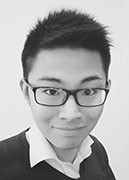 |
ESR 15 – Yue Li – Siemens Industry Software NV BIO: Yue Li received his BSc degree in Ocean and Naval Engineering from Tianjin University in China 2013. He moved to Norway to pursue a MSc degree in Ship Design at Norwegian University of Science and Technology (NTNU i Alesund). After graduation in 2015, he was employed as a researcher by NTNU. His field of expertise is in numerical modelling, virtual prototyping, dynamic system modelling and simulation. Previously, he was involved in simulation of sloshing in LNG fuel tank, vacuum sanitary system and full scale ship hydrodynamics. He was a main developer of a real-time simulator for marine operations at NTNU Alesund. He is the author/co-author of three peer-reviewed conference papers. Yue will conduct research on the topic “Advanced BEM for binaural synthesis including moving source or listener” as an Early Stage Researcher (ESR). RESEARCH PROJECT: Room/cavity acoustic simulations requires solution of very large models and usually are out of reach for standard element based methods. On the other hand, there have been various improvements on the Fast Boundary Element Methods in recent years, which allows tackling of extra-large problems with reasonable computational resources. The PhD research will concentrate on assessment of such advanced numerical methods in the context of room acoustic/cavity simulations first and will have a test validation track afterwards. The numerical part will focus on evaluation and implementation of fast Boundary Element Methods (BEM). This includes comparison of H-Matrix, H2-Matrix and Fast Multipole BEM (FM-BEM) techniques. Most recent algorithmic improvements to these methods will be observed. The next step will be the industrialization of the fast BEM, which will depend on the outcome of the comparison. Emerging software libraries and computing hardware (GPU and Xeon Phi architectures) will be evaluated for their applicability to BEM. The test part will focus on the validation of the developed numerical tools. In particular, binaural synthesis for interior acoustics will be carried out using BEM’s efficient post-processing feature. In addition, the identification of material properties of geometrically-complex structures using the developed models will be investigated. E-mail: li.yue@siemens.com |

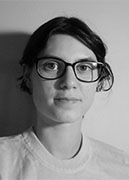
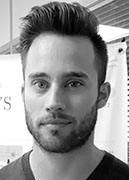
 This project has received funding from the European Union’s Horizon 2020 research and innovation programme under the Marie Sklodowska-Curie grant agreement number 721536.
This project has received funding from the European Union’s Horizon 2020 research and innovation programme under the Marie Sklodowska-Curie grant agreement number 721536.